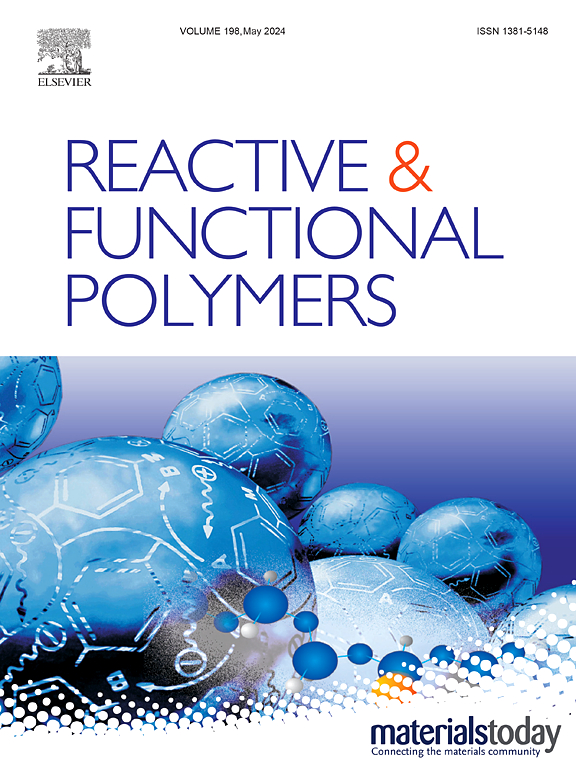Preparation and application of superhydrophobic polypropylene melt-blown nonwovens by organic solvent etch
IF 4.5
3区 工程技术
Q1 CHEMISTRY, APPLIED
引用次数: 0
Abstract
Since the global outbreak of COVID-19, medical masks have become one of the most concerned pieces of epidemiological protection equipment. Polypropylene melt-blown nonwovens are the core filtration materials of medical masks, but the filtration performance deteriorates drastically with prolonged use and water vapor adherence. Here, a series of organic solvents were used to etch the melt-blown nonwovens to construct a graded rough structure and thus obtain durable superhydrophobic melt-blown nonwovens. The melt-blown nonwovens etched with a mixture of cyclohexane and n-hexane (volume ratio: 3:2) at 65 °C for 30 min exhibited excellent superhydrophobicity (water contact angle ∼153.5°, sliding angle ∼5.9°), high durability and great chemical resistance. The mechanical strength of the superhydrophobic melt-blown nonwoven has changed very little compared to the original melt- blown nonwoven, and it has a good filtration efficiency (89.2 %) and low wind resistance (24.3 Pa). In addition, the superhydrophobic melt-blown nonwoven can achieve more than 8.5 times its previous mass of organic solvent adsorption, with oil and water separation efficiency reaching over 91 %. Therefore, the PP melt-blowns prepared by the organic solvent etching method have greatly improved mask filtration performance and they also have great application prospect in oil-water separation.

有机溶剂蚀刻法制备超疏水聚丙烯熔喷非织造布及应用
自2019冠状病毒病全球爆发以来,医用口罩已成为最受关注的流行病学防护装备之一。聚丙烯熔喷非织造布是医用口罩的核心过滤材料,但随着使用时间的延长和水汽的粘附,其过滤性能急剧下降。本研究采用一系列有机溶剂对熔喷非织造布进行蚀刻,形成渐变的粗糙结构,从而获得耐久的超疏水熔喷非织造布。用环己烷和正己烷的混合物(体积比:3:2)在65°C下蚀刻30 min的熔喷非织造布具有优异的超疏水性(水接触角~ 153.5°,滑动角~ 5.9°),高耐久性和良好的耐化学性。超疏水熔喷非织造布的机械强度与原熔喷非织造布相比变化很小,具有良好的过滤效率(89.2%)和低风阻(24.3 Pa)。此外,超疏水熔喷非织造布对有机溶剂的吸附量是以前的8.5倍以上,油水分离效率达到91%以上。因此,采用有机溶剂蚀刻法制备的PP熔吹膜大大提高了掩膜过滤性能,在油水分离方面也有很大的应用前景。
本文章由计算机程序翻译,如有差异,请以英文原文为准。
求助全文
约1分钟内获得全文
求助全文
来源期刊

Reactive & Functional Polymers
工程技术-高分子科学
CiteScore
8.90
自引率
5.90%
发文量
259
审稿时长
27 days
期刊介绍:
Reactive & Functional Polymers provides a forum to disseminate original ideas, concepts and developments in the science and technology of polymers with functional groups, which impart specific chemical reactivity or physical, chemical, structural, biological, and pharmacological functionality. The scope covers organic polymers, acting for instance as reagents, catalysts, templates, ion-exchangers, selective sorbents, chelating or antimicrobial agents, drug carriers, sensors, membranes, and hydrogels. This also includes reactive cross-linkable prepolymers and high-performance thermosetting polymers, natural or degradable polymers, conducting polymers, and porous polymers.
Original research articles must contain thorough molecular and material characterization data on synthesis of the above polymers in combination with their applications. Applications include but are not limited to catalysis, water or effluent treatment, separations and recovery, electronics and information storage, energy conversion, encapsulation, or adhesion.
 求助内容:
求助内容: 应助结果提醒方式:
应助结果提醒方式:


